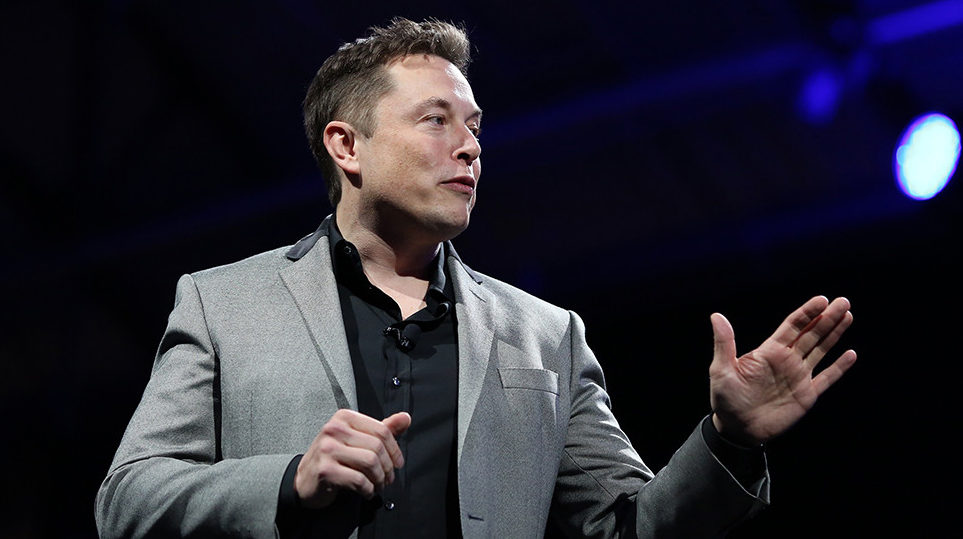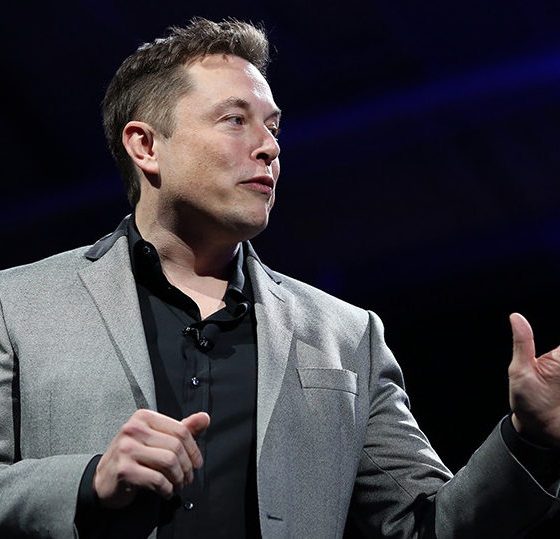

News
Tesla’s Elon Musk and SEC explains their settlement in joint letter to US judge
Elon Musk and the Securities and Exchange Commission have submitted a joint letter explaining their settlement for a lawsuit resulting from the Tesla CEO’s “funding secured” tweet last August. The letter, which was dated October 11, 2018, comes a week after U.S. District Judge Alison Nathan asked Musk and the SEC to justify their settlement before she approves the deal.
The CEO found himself in hot water late last month after the SEC filed a suit over tweets posted in August, when Musk announced that he was considering taking Tesla private at $420 per share, and that he had “funding secured.” Tesla stock plunged as news of the agency’s lawsuit emerged, dropping more than 13% amidst reports that Musk allegedly rejected a settlement prepared by the SEC. Elon Musk would agree to a settlement with the SEC in the weekend that followed.
Under the terms of the settlement, Musk would be required to step down as Chairman of Tesla’s Board of Directors. The company would also appoint two new independent directors to its board. Elon Musk and Tesla Inc. would have to pay a fine of $20 million each as well, which would, in turn, be distributed to harmed investors under a court-approved process. In a statement last Thursday, Judge Nathan asked Musk and the SEC for a joint letter explaining their settlement, noting that the court needs to make a “minimal determination of whether the agreement is appropriate” before things are finalized.
The SEC noted in the joint letter that it considered multiple factors when it was determining the appropriate penalties for Musk and Tesla, from the gravity of Musk’s alleged violations to the CEO’s lack of monetary gain resulting from his “funding secured” tweet.
“In this case, the SEC considered multiple factors in determining appropriate civil penalties. These included the seriousness of the alleged violations, the market impact caused by the alleged conduct, and Defendants’ financial means, but also countervailing factors such as Defendants’ willingness to settle these actions promptly, Defendants’ apparent lack of pecuniary gain, and the limited temporal scope of the conduct.”
The agency further noted that sanctions against Elon Musk and Tesla are designed to benefit investors by putting additional governance measures in the electric car and energy company. Musk’s representatives, for their part, simply noted in the joint letter that the CEO believes a prompt resolution through the settlement is in the best interests of Tesla’s investors.
“Tesla and Mr. Musk believe that a prompt resolution of these actions through settlement is in the best interests of investors and should be approved.”
The submission of Elon Musk and the SEC’s joint letter comes amidst news that one of Tesla’s largest investors has increased its stake in the company. On Wednesday, it was revealed that T. Rowe Price Group Inc., which owned 11.93 million TSLA shares at the end of Q2 2018, increased its stake in the company in Q3. By the end of September, the firm held 17.4 million TSLA shares, making it the company’s second-largest shareholder, second only to Elon Musk. Another institutional investor, Bailey Gifford, which owns 13.2 million TSLA shares, currently stands as Tesla’s third-largest shareholder.
With Tesla’s Q3 earnings report coming in less than four weeks, T. Rowe Price’s increased stake in the electric car maker could prove to be a strategic investment for the financial firm. Tesla, after all, finished the third quarter on a strong note, delivering and producing a record number of vehicles. Less than two days before the end of the quarter, Musk even sent out a message to Tesla’s employees, urging them to work hard as the company is “very close” to profitability. Since October began, Tesla has also been showing signs that its Model 3 production ramp continues to grow stronger. Teases of an eventual international rollout for the electric car, such as an exhibit in the Paris Motor Show, further suggest that Tesla is steadily gaining its foothold in its efforts to roll out its first mass-market vehicle.
Elon Musk and the SEC’s joint letter could be read in full below.
SEC v Elon Musk – Joint Sub… by on Scribd

News
Tesla FSD fleet is nearing 7 billion total miles, including 2.5 billion city miles
As can be seen on Tesla’s official FSD webpage, vehicles equipped with the system have now navigated over 6.99 billion miles.

Tesla’s Full Self-Driving (Supervised) fleet is closing in on almost 7 billion total miles driven, as per data posted by the company on its official FSD webpage.
These figures hint at the massive scale of data fueling Tesla’s rapid FSD improvements, which have been quite notable as of late.
FSD mileage milestones
As can be seen on Tesla’s official FSD webpage, vehicles equipped with the system have now navigated over 6.99 billion miles. Tesla owner and avid FSD tester Whole Mars Catalog also shared a screenshot indicating that from the nearly 7 billion miles traveled by the FSD fleet, more than 2.5 billion miles were driven inside cities.
City miles are particularly valuable for complex urban scenarios like unprotected turns, pedestrian interactions, and traffic lights. This is also the difference-maker for FSD, as only complex solutions, such as Waymo’s self-driving taxis, operate similarly on inner-city streets. And even then, incidents such as the San Francisco blackouts have proven challenging for sensor-rich vehicles like Waymos.
Tesla’s data edge
Tesla has a number of advantages in the autonomous vehicle sector, one of which is the size of its fleet and the number of vehicles training FSD on real-world roads. Tesla’s nearly 7 billion FSD miles then allow the company to roll out updates that make its vehicles behave like they are being driven by experienced drivers, even if they are operating on their own.
So notable are Tesla’s improvements to FSD that NVIDIA Director of Robotics Jim Fan, after experiencing FSD v14, noted that the system is the first AI that passes what he described as a “Physical Turing Test.”
“Despite knowing exactly how robot learning works, I still find it magical watching the steering wheel turn by itself. First it feels surreal, next it becomes routine. Then, like the smartphone, taking it away actively hurts. This is how humanity gets rewired and glued to god-like technologies,” Fan wrote in a post on X.
News
Tesla starts showing how FSD will change lives in Europe
Local officials tested the system on narrow country roads and were impressed by FSD’s smooth, human-like driving, with some calling the service a game-changer for everyday life in areas that are far from urban centers.

Tesla has launched Europe’s first public shuttle service using Full Self-Driving (Supervised) in the rural Eifelkreis Bitburg-Prüm region of Germany, demonstrating how the technology can restore independence and mobility for people who struggle with limited transport options.
Local officials tested the system on narrow country roads and were impressed by FSD’s smooth, human-like driving, with some calling the service a game-changer for everyday life in areas that are far from urban centers.
Officials see real impact on rural residents
Arzfeld Mayor Johannes Kuhl and District Administrator Andreas Kruppert personally tested the Tesla shuttle service. This allowed them to see just how well FSD navigated winding lanes and rural roads confidently. Kruppert said, “Autonomous driving sounds like science fiction to many, but we simply see here that it works totally well in rural regions too.” Kuhl, for his part, also noted that FSD “feels like a very experienced driver.”
The pilot complements the area’s “Citizen Bus” program, which provides on-demand rides for elderly residents who can no longer drive themselves. Tesla Europe shared a video of a demonstration of the service, highlighting how FSD gives people their freedom back, even in places where public transport is not as prevalent.
What the Ministry for Economic Affairs and Transport says
Rhineland-Palatinate’s Minister Daniela Schmitt supported the project, praising the collaboration that made this “first of its kind in Europe” possible. As per the ministry, the rural rollout for the service shows FSD’s potential beyond major cities, and it delivers tangible benefits like grocery runs, doctor visits, and social connections for isolated residents.
“Reliable and flexible mobility is especially vital in rural areas. With the launch of a shuttle service using self-driving vehicles (FSD supervised) by Tesla in the Eifelkreis Bitburg-Prüm, an innovative pilot project is now getting underway that complements local community bus services. It is the first project of its kind in Europe.
“The result is a real gain for rural mobility: greater accessibility, more flexibility and tangible benefits for everyday life. A strong signal for innovation, cooperation and future-oriented mobility beyond urban centers,” the ministry wrote in a LinkedIn post.
News
Tesla China quietly posts Robotaxi-related job listing
Tesla China is currently seeking a Low Voltage Electrical Engineer to work on circuit board design for the company’s autonomous vehicles.

Tesla has posted a new job listing in Shanghai explicitly tied to its Robotaxi program, fueling speculation that the company is preparing to launch its dedicated autonomous ride-hailing service in China.
As noted in the listing, Tesla China is currently seeking a Low Voltage Electrical Engineer to work on circuit board design for the company’s autonomous vehicles.
Robotaxi-specific role
The listing, which was shared on social media platform X by industry watcher @tslaming, suggested that Tesla China is looking to fill the role urgently. The job listing itself specifically mentions that the person hired for the role will be working on the Low Voltage Hardware team, which would design the circuit boards that would serve as the nervous system of the Robotaxi.
Key tasks for the role, as indicated in the job listing, include collaboration with PCB layout, firmware, mechanical, program management, and validation teams, among other responsibilities. The role is based in Shanghai.
China Robotaxi launch
China represents a massive potential market for robotaxis, with its dense urban centers and supportive policies in select cities. Tesla has limited permission to roll out FSD in the country, though despite this, its vehicles have been hailed as among the best in the market when it comes to autonomous features. So far, at least, it appears that China supports Tesla’s FSD and Robotaxi rollout.
This was hinted at in November, when Tesla brought the Cybercab to the 8th China International Import Expo (CIIE) in Shanghai, marking the first time that the autonomous two-seater was brought to the Asia-Pacific region. The vehicle, despite not having a release date in China, received a significant amount of interest among the event’s attendees.








